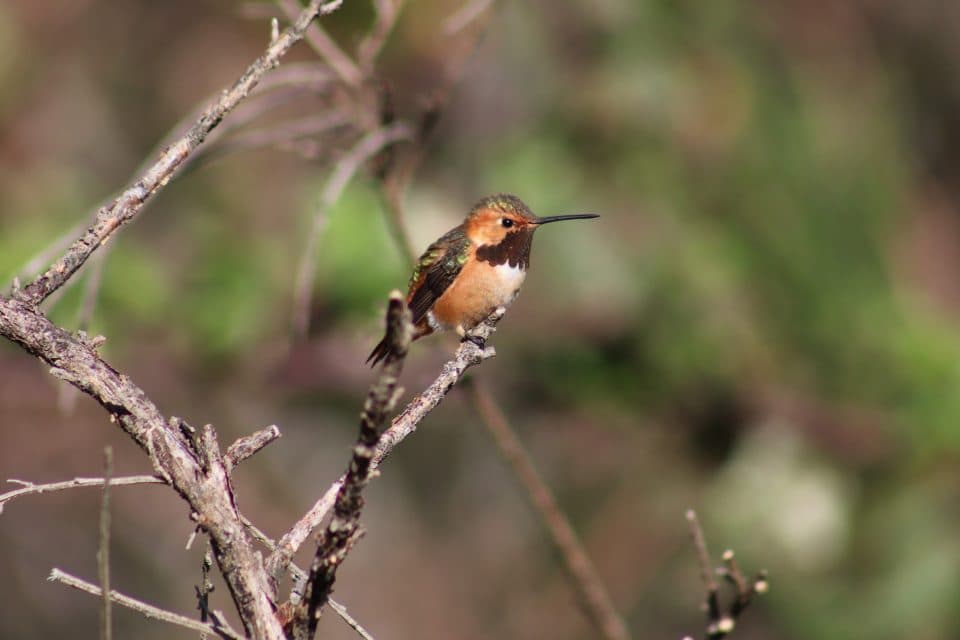
Hummingbird ‘hybrid zone’ sheds light on species interbreeding
A previously unknown hybrid zone for hummingbirds has been discovered along the coast of northern California and southern Oregon.
Hybrid zones are areas where two species interact with each other and sometimes interbreed. Interbreeding can result in new mutations, adaptations, and increases in biodiversity.
Hybrid zones offer a key resource for understanding how rare instances of interbreeding impact species diversity.
In a new study, researchers from San Diego State University mapped out a hummingbird hybrid zone where Allen’s Hummingbirds and Rufous Hummingbirds overlapped.
The researchers observed courtship behavior and collected data from more than 300 hummingbirds in the region by trapping the male birds at feeders and carrying around females in cages.
“Sometimes the birds outsmart me,” said Brian Myers, a member of the research team. “They’ll only visit a feeder when the trap isn’t on it, or they won’t perform their courtship displays to the female hummingbird I’m carrying around, and this can make things very slow sometimes.”
Both Rufous and Allen’s hummingbirds have distinct acrobatic mating displays unique to their perspective species.
The breeding males in the hybrid zone, which spanned nearly 100 miles along the Pacific Coast, had mating displays that were a mix of both species. This mix shifted more toward Rufous mating displays further north to more Allen’s-like toward the south end of the zone.
“When a hybrid zone is so large, and when one of the hybridizing species has as small a range as Allen’s Hummingbird, it raises the possibility of their range shrinking even further as they’re swamped by hybrids that carry Rufous Hummingbird traits and pass these genes into Allen’s Hummingbird populations,” said Myers.
The study, published in the journal the Auk: Ornithological Advances offers insight into interbreeding and biodiversity.
“As biodiversity continues to drop, it’s more important than ever to understand how new species form and what maintains species barriers once they’re made – is there a certain habitat or other resources that require protection,” asked Meyers. Is it more related to sexual selection? Hybrid zones are an ideal tool with which to study this.”
—
By Kay Vandette, Earth.com Staff Writer
Image Credit: Brian Myers












